Last week, Teagasc, along with the Department of Agriculture, Bord Bia and the Irish Cattle Breeding Federation (ICBF), launched the stakeholder consultation process of a 10-point action plan for supporting dairy calf-to-beef systems in Ireland.
The plan has been developed in support of the Food Vision 2020 goal of promoting greater integration of dairy and beef systems, especially in relation to production of beef from the dairy sector, and to develop and support dairy-beef systems in general.
Speaking at the opening of the conference, Liam Herlihy, chair of the Teagasc authority, said:
“The number of dairy cows has grown from 1.1 million to 1.6 million dairy cows since the abolition of dairy quotas.
"The processing of this milk has been done really well, with the help of the Department and the processing sector.
"The dairy processing sector has done enormously positive things for dairy farmers.
“We would also have to acknowledge that we haven’t been as good in dealing with the extra 500,000 calves being generated by the national dairy herd, but with proper joined-up thinking, better quality calves and new research into dairy-beef production can be a win-win situation for both the dairy farmer and the beef farmer.
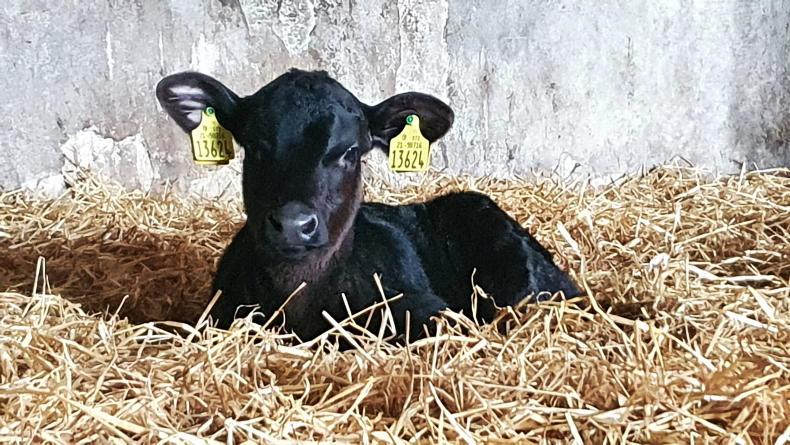
Calf health is very important for a successful dairy-beef
“Animals from the dairy herd can often come in at a cheaper price and can be very effective.”
Calf housing
He went on to say: “In my farming life, grants have been very important , with particular reference to animal housing.
“Calf housing is possibly one area where investment didn’t keep track with the growth in dairy cow numbers. Farmers have always responded to grants and I would urge everyone involved to give this some thought.”
Minister for Agriculture, Charlie McConalogue, said: “Looking after calves is a key priority for me and my Department, and we have a very strong calf stakeholder group who are doing great work in relation to this.
“Our DNA registration programme is a huge step towards harnessing more genetic data, to make informed breeding decisions. This will give beef farmers accurate information on the Commercial Beef Value (CBV) of the calf they are purchasing.”
Action 1: Profitable and environmentally sustainable dairy-beef systems
Research carried out at Teagasc, Grange, has established profitable and environmentally sustainable dairy-beef production systems, using key technologies in relation to dairy-beef genetics, calf-rearing and health and grassland management.

TAMS III grants have an important role to play in making sure proper calf-rearing facilities are in place on farms.
Teagasc and the Department will publish a series of factsheets on the key performance benchmarks required to maximise the profitability of dairy-beef systems.
Conference
Teagasc will also organise a dedicated dairy-beef conference in 2024 to highlight the latest developments in new technologies.
Teagasc will use its website to disseminate knowledge on dairy-beef systems.
The Teagasc National Farm Survey should also consider reporting dairy-beef as a separate cattle enterprise, to monitor its annual financial and technical situation.
There were approximately 275,000 straws of sex-sorted semen available for use during the 2023 breeding season, about 150,000 of which were used. It’s thought that this could grow to 250,000 doses used in 2024. This has led to a decrease in the use of dairy AI.
Teagasc will target communication to dairy farmers this spring to incorporate sexed semen into their plans of generating replacement heifers, and will also provide clear communication on the optimum strategies to use sexed semen technology.
The Dairy Beef Scheme will be launched in March 2024. The aim of this scheme is to improve the value of dairy-beef calves, through incentivising the use of genetically superior beef AI/stock bulls (3 to 5 stars on the DBI beef sub index) in dairy herds.
The CBV reflects the potential profit of animals in dairy-beef production. This index will give confidence to farmers when purchasing dairy-beef calves.
The launch of the National Genotyping programme this spring will help promote the use of CBVs to purchase calves, as it will be available on mart screens on all genotyped calves.
High-DBI AI genetics will be promoted for use on dairy farms, and marts will be engaged to make sure the CBV index is clearly communicated to farmers when purchasing calves.
ICBF will develop a communication strategy targeted at beef farmers on the merits of purchasing high-CBV calves. There is also a requirement to develop a strategy to accelerate the rate of genetic progress within the DBI.
Action 4: Capital grants
available under TAMS III
The importance of supports was referenced by a number of speakers at last Thursday’s dairy-beef seminar in Portlaoise.
TAMS III currently grants aid for calf-specific investment items, such as calf housing, calving gates and pens, calf creep pens, calf dehorning crates, milk carts, and computerised feeders. Grants of between 40% to 60% are available for the purchase of this equipment.
The Department of Agriculture will issue specific TAMS III advice to dairy and beef farmers, and they will also hold a specific webinar on calf housing investment items.
Action 5: Knowledge Transfer
A small number of dedicated dairy-beef discussion groups have been set up nationwide, as part of the DairyBeef 500 campaign. Teagasc has set a target of three such groups in each one of their 12 advisory regions by 2025.
Teagasc is also keen to support new entrants in dairy-beef. Teagasc and the Agricultural Consultants Association (ACA) will look to set up more dairy-beef discussion groups. Dairy processors should encourage the usage of high-DBI bulls.
Dairy-beef will feature strongly at the BEEF 2024 Open Day at Grange. Teagasc and the ACA will look to increase their specialist adviser capacity in dairy-beef.
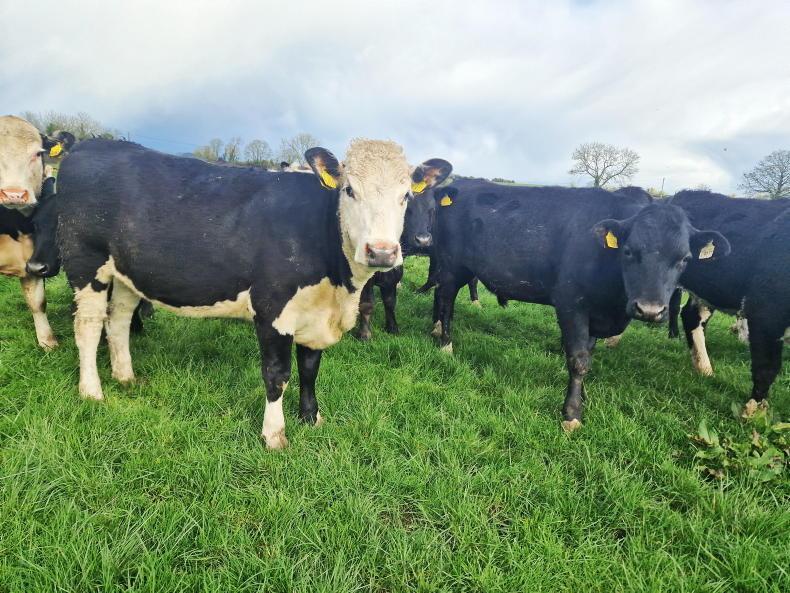
High weight gains from grazed grass are critical for a successful dairy calf to beef enterprise.
Action 6: Demonstration Farms
The Teagasc DairyBeef 500 campaign was launched in autumn 2022 and runs up until the end of 2027.
The campaign involves key stakeholders in the industry with the objective being to reach a target net margin of €500/ha on dairy-beef farms. There are 16 demonstration farms, along with the Tipperary calf-to-beef demonstration farm.
A nationwide network of farm walks will take place in summer 2024. The Tipperary calf-to-beef demonstration farm will also run an open day in 2024.
Action 7: Formalise relationships between dairy and beef farmers
There are existing incentives to encourage collaboration and farm partnerships, like the Collaborative Farming grant. Macra is also running the land mobility service. ICOS will develop a specialist “match makers” service that will create networks of dairy and beef farmers suitable for partnership.
Including CBVs on all mart dockets has also been suggested, along with some extra grant aid to cover the establishment costs of setting up a partnership.
This action will focus on reversing the decline in carcase weight and reduction in the grading profile of Irish dairy-beef progeny.
Halting this decline will result in a higher number of prime carcases meeting the minimum in-spec criteria (minimum conformation O=) to optimise price bonuses under the QPS.
As part of this action, Bord Bia will communicate the developments and commitments in relation to dairy-beef production to underpin confidence in the produce quality.
Action 9: Beef processors
Dairy-beef will be an increasingly important part of the supply of beef in the future, with the current dairy-beef proportion of national kill standing at 63%.
Beef processors should promote the adoption of best practices in relation to dairy-beef genetics, calf-rearing and grassland management.
The action also states that vertically integrated dairy-beef systems will have a role to play in terms of beef genetics specification, farm-to-farm movement and hitting target carcase specifications for specific market requirements.
Teagasc will develop a range of vertically integrated models with industry support to reward both dairy and beef farmers. The current tie-ups between milk processor, meat processor and farmers will also be examined.
Action 10: Improved Calf Health and Welfare
Actions to improve calf health and welfare have already been discussed at the Calf stakeholder forum. AHI, in conjunction with Teagasc, have already been running dedicated calf-care events for a number of years.
More applications for calf housing under TAMS will be promoted. Best practice will also be promoted on colostrum feeding, animal health plans and overall calf and animal management.
Teagasc plan to publish the 10-point Action Plan in February.
Stakeholders and interested parties are requested to reply with suggested changes/edits to the draft document to: dairybeefactionplan@agriculture.gov.ie, no later than Friday 9 February 2024.
Last week, Teagasc, along with the Department of Agriculture, Bord Bia and the Irish Cattle Breeding Federation (ICBF), launched the stakeholder consultation process of a 10-point action plan for supporting dairy calf-to-beef systems in Ireland.
The plan has been developed in support of the Food Vision 2020 goal of promoting greater integration of dairy and beef systems, especially in relation to production of beef from the dairy sector, and to develop and support dairy-beef systems in general.
Speaking at the opening of the conference, Liam Herlihy, chair of the Teagasc authority, said:
“The number of dairy cows has grown from 1.1 million to 1.6 million dairy cows since the abolition of dairy quotas.
"The processing of this milk has been done really well, with the help of the Department and the processing sector.
"The dairy processing sector has done enormously positive things for dairy farmers.
“We would also have to acknowledge that we haven’t been as good in dealing with the extra 500,000 calves being generated by the national dairy herd, but with proper joined-up thinking, better quality calves and new research into dairy-beef production can be a win-win situation for both the dairy farmer and the beef farmer.

Calf health is very important for a successful dairy-beef
“Animals from the dairy herd can often come in at a cheaper price and can be very effective.”
Calf housing
He went on to say: “In my farming life, grants have been very important , with particular reference to animal housing.
“Calf housing is possibly one area where investment didn’t keep track with the growth in dairy cow numbers. Farmers have always responded to grants and I would urge everyone involved to give this some thought.”
Minister for Agriculture, Charlie McConalogue, said: “Looking after calves is a key priority for me and my Department, and we have a very strong calf stakeholder group who are doing great work in relation to this.
“Our DNA registration programme is a huge step towards harnessing more genetic data, to make informed breeding decisions. This will give beef farmers accurate information on the Commercial Beef Value (CBV) of the calf they are purchasing.”
Action 1: Profitable and environmentally sustainable dairy-beef systems
Research carried out at Teagasc, Grange, has established profitable and environmentally sustainable dairy-beef production systems, using key technologies in relation to dairy-beef genetics, calf-rearing and health and grassland management.

TAMS III grants have an important role to play in making sure proper calf-rearing facilities are in place on farms.
Teagasc and the Department will publish a series of factsheets on the key performance benchmarks required to maximise the profitability of dairy-beef systems.
Conference
Teagasc will also organise a dedicated dairy-beef conference in 2024 to highlight the latest developments in new technologies.
Teagasc will use its website to disseminate knowledge on dairy-beef systems.
The Teagasc National Farm Survey should also consider reporting dairy-beef as a separate cattle enterprise, to monitor its annual financial and technical situation.
There were approximately 275,000 straws of sex-sorted semen available for use during the 2023 breeding season, about 150,000 of which were used. It’s thought that this could grow to 250,000 doses used in 2024. This has led to a decrease in the use of dairy AI.
Teagasc will target communication to dairy farmers this spring to incorporate sexed semen into their plans of generating replacement heifers, and will also provide clear communication on the optimum strategies to use sexed semen technology.
The Dairy Beef Scheme will be launched in March 2024. The aim of this scheme is to improve the value of dairy-beef calves, through incentivising the use of genetically superior beef AI/stock bulls (3 to 5 stars on the DBI beef sub index) in dairy herds.
The CBV reflects the potential profit of animals in dairy-beef production. This index will give confidence to farmers when purchasing dairy-beef calves.
The launch of the National Genotyping programme this spring will help promote the use of CBVs to purchase calves, as it will be available on mart screens on all genotyped calves.
High-DBI AI genetics will be promoted for use on dairy farms, and marts will be engaged to make sure the CBV index is clearly communicated to farmers when purchasing calves.
ICBF will develop a communication strategy targeted at beef farmers on the merits of purchasing high-CBV calves. There is also a requirement to develop a strategy to accelerate the rate of genetic progress within the DBI.
Action 4: Capital grants
available under TAMS III
The importance of supports was referenced by a number of speakers at last Thursday’s dairy-beef seminar in Portlaoise.
TAMS III currently grants aid for calf-specific investment items, such as calf housing, calving gates and pens, calf creep pens, calf dehorning crates, milk carts, and computerised feeders. Grants of between 40% to 60% are available for the purchase of this equipment.
The Department of Agriculture will issue specific TAMS III advice to dairy and beef farmers, and they will also hold a specific webinar on calf housing investment items.
Action 5: Knowledge Transfer
A small number of dedicated dairy-beef discussion groups have been set up nationwide, as part of the DairyBeef 500 campaign. Teagasc has set a target of three such groups in each one of their 12 advisory regions by 2025.
Teagasc is also keen to support new entrants in dairy-beef. Teagasc and the Agricultural Consultants Association (ACA) will look to set up more dairy-beef discussion groups. Dairy processors should encourage the usage of high-DBI bulls.
Dairy-beef will feature strongly at the BEEF 2024 Open Day at Grange. Teagasc and the ACA will look to increase their specialist adviser capacity in dairy-beef.

High weight gains from grazed grass are critical for a successful dairy calf to beef enterprise.
Action 6: Demonstration Farms
The Teagasc DairyBeef 500 campaign was launched in autumn 2022 and runs up until the end of 2027.
The campaign involves key stakeholders in the industry with the objective being to reach a target net margin of €500/ha on dairy-beef farms. There are 16 demonstration farms, along with the Tipperary calf-to-beef demonstration farm.
A nationwide network of farm walks will take place in summer 2024. The Tipperary calf-to-beef demonstration farm will also run an open day in 2024.
Action 7: Formalise relationships between dairy and beef farmers
There are existing incentives to encourage collaboration and farm partnerships, like the Collaborative Farming grant. Macra is also running the land mobility service. ICOS will develop a specialist “match makers” service that will create networks of dairy and beef farmers suitable for partnership.
Including CBVs on all mart dockets has also been suggested, along with some extra grant aid to cover the establishment costs of setting up a partnership.
This action will focus on reversing the decline in carcase weight and reduction in the grading profile of Irish dairy-beef progeny.
Halting this decline will result in a higher number of prime carcases meeting the minimum in-spec criteria (minimum conformation O=) to optimise price bonuses under the QPS.
As part of this action, Bord Bia will communicate the developments and commitments in relation to dairy-beef production to underpin confidence in the produce quality.
Action 9: Beef processors
Dairy-beef will be an increasingly important part of the supply of beef in the future, with the current dairy-beef proportion of national kill standing at 63%.
Beef processors should promote the adoption of best practices in relation to dairy-beef genetics, calf-rearing and grassland management.
The action also states that vertically integrated dairy-beef systems will have a role to play in terms of beef genetics specification, farm-to-farm movement and hitting target carcase specifications for specific market requirements.
Teagasc will develop a range of vertically integrated models with industry support to reward both dairy and beef farmers. The current tie-ups between milk processor, meat processor and farmers will also be examined.
Action 10: Improved Calf Health and Welfare
Actions to improve calf health and welfare have already been discussed at the Calf stakeholder forum. AHI, in conjunction with Teagasc, have already been running dedicated calf-care events for a number of years.
More applications for calf housing under TAMS will be promoted. Best practice will also be promoted on colostrum feeding, animal health plans and overall calf and animal management.
Teagasc plan to publish the 10-point Action Plan in February.
Stakeholders and interested parties are requested to reply with suggested changes/edits to the draft document to: dairybeefactionplan@agriculture.gov.ie, no later than Friday 9 February 2024.








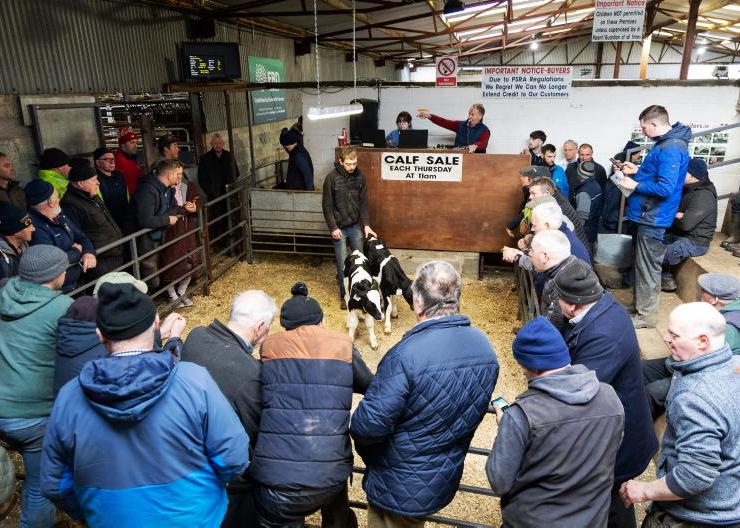

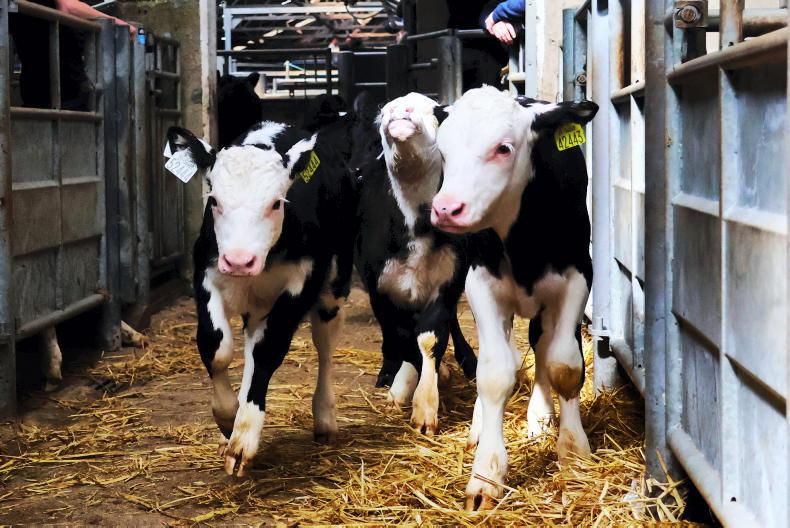
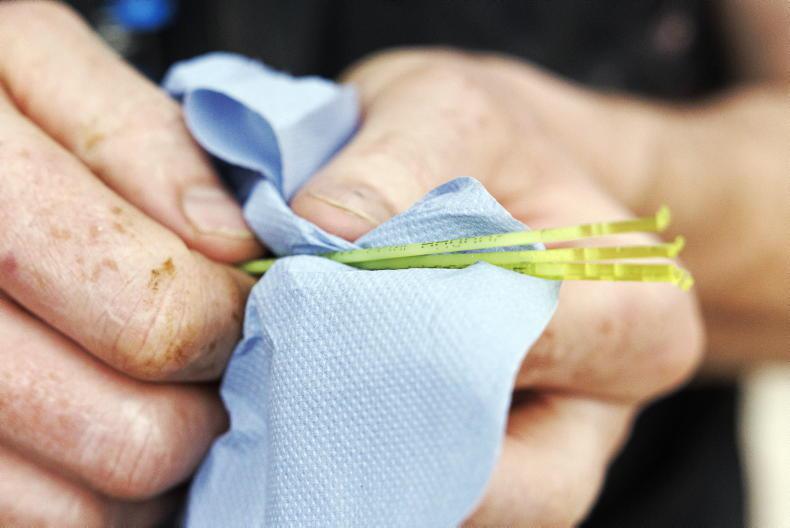

SHARING OPTIONS